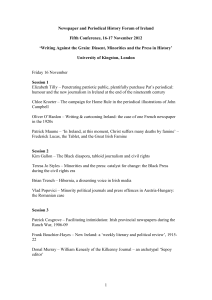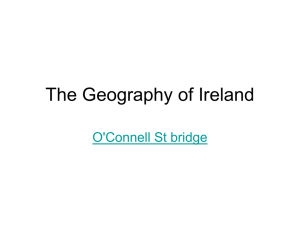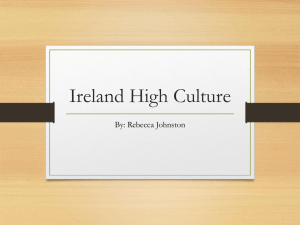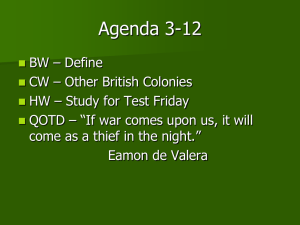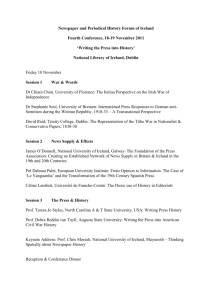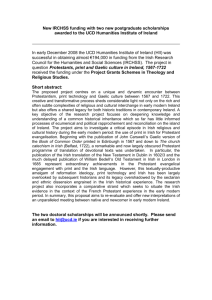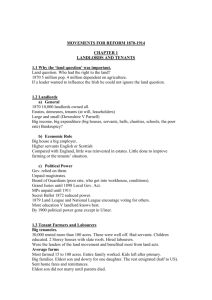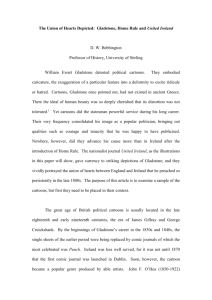IRISH PROBLEM A: When we are talking about “The Irish Problem
advertisement
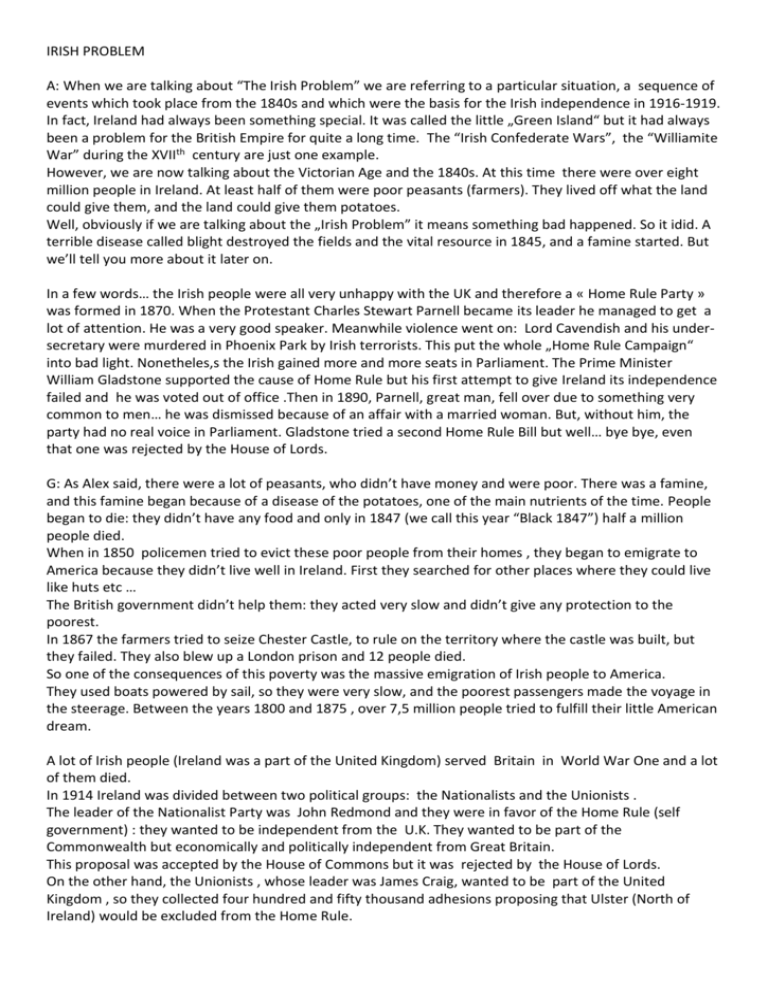
IRISH PROBLEM A: When we are talking about “The Irish Problem” we are referring to a particular situation, a sequence of events which took place from the 1840s and which were the basis for the Irish independence in 1916-1919. In fact, Ireland had always been something special. It was called the little „Green Island“ but it had always been a problem for the British Empire for quite a long time. The “Irish Confederate Wars”, the “Williamite War” during the XVIIth century are just one example. However, we are now talking about the Victorian Age and the 1840s. At this time there were over eight million people in Ireland. At least half of them were poor peasants (farmers). They lived off what the land could give them, and the land could give them potatoes. Well, obviously if we are talking about the „Irish Problem” it means something bad happened. So it idid. A terrible disease called blight destroyed the fields and the vital resource in 1845, and a famine started. But we’ll tell you more about it later on. In a few words… the Irish people were all very unhappy with the UK and therefore a « Home Rule Party » was formed in 1870. When the Protestant Charles Stewart Parnell became its leader he managed to get a lot of attention. He was a very good speaker. Meanwhile violence went on: Lord Cavendish and his undersecretary were murdered in Phoenix Park by Irish terrorists. This put the whole „Home Rule Campaign“ into bad light. Nonetheles,s the Irish gained more and more seats in Parliament. The Prime Minister William Gladstone supported the cause of Home Rule but his first attempt to give Ireland its independence failed and he was voted out of office .Then in 1890, Parnell, great man, fell over due to something very common to men… he was dismissed because of an affair with a married woman. But, without him, the party had no real voice in Parliament. Gladstone tried a second Home Rule Bill but well… bye bye, even that one was rejected by the House of Lords. G: As Alex said, there were a lot of peasants, who didn’t have money and were poor. There was a famine, and this famine began because of a disease of the potatoes, one of the main nutrients of the time. People began to die: they didn’t have any food and only in 1847 (we call this year “Black 1847”) half a million people died. When in 1850 policemen tried to evict these poor people from their homes , they began to emigrate to America because they didn’t live well in Ireland. First they searched for other places where they could live like huts etc … The British government didn’t help them: they acted very slow and didn’t give any protection to the poorest. In 1867 the farmers tried to seize Chester Castle, to rule on the territory where the castle was built, but they failed. They also blew up a London prison and 12 people died. So one of the consequences of this poverty was the massive emigration of Irish people to America. They used boats powered by sail, so they were very slow, and the poorest passengers made the voyage in the steerage. Between the years 1800 and 1875 , over 7,5 million people tried to fulfill their little American dream. A lot of Irish people (Ireland was a part of the United Kingdom) served Britain in World War One and a lot of them died. In 1914 Ireland was divided between two political groups: the Nationalists and the Unionists . The leader of the Nationalist Party was John Redmond and they were in favor of the Home Rule (self government) : they wanted to be independent from the U.K. They wanted to be part of the Commonwealth but economically and politically independent from Great Britain. This proposal was accepted by the House of Commons but it was rejected by the House of Lords. On the other hand, the Unionists , whose leader was James Craig, wanted to be part of the United Kingdom , so they collected four hundred and fifty thousand adhesions proposing that Ulster (North of Ireland) would be excluded from the Home Rule. The Ulster was richer than the rest of the country and Protestant, whereas in the rest of the island people were Catholics . As a result there was a conflict between the two parts of the Country. The conflict was both political and religious. During WWI Ireland was ruled by the Labor Party (nationalist) and the Conservative Party (unionist); from this latter the Volunteers of Ireland were born. The WWI ended in 1918 and there was a major crisis between Ireland and U.K The elected representatives of Ireland refused go to the English parliament and opened a new parliament called Dáil Éireann: it was the symbol of the independence of Ireland from U.K, but this independence was not recognized by any land. As a consequence, the war of independence started. A: The Irish problem was far from being solved… and it hasn’t been solved yet … if we think about the “Troubles”, the conflict between the IRA and the UVF (Ulster Volunteer Forces)… Ireland is Ireland and still remains something special.


